My First BL/Yuri Anime and Manga – the Anime UK News writers indulge in some LGBT+ nostalgia to celebrate Pride Month 2022
I remember – very vividly! – going into our local Waterstones (in the early noughties) and seeing a spinner filled with brightly-coloured paperbacks, bearing the name TOKYOPOP at the top. Manga had reached Bromley! Not just seinen, shonen and shojo series, but mysterious and alluring titles that promised a rather different kind of story-telling from your average US comic: FAKE by Sanami Matoh, Gravitation by Maki Murakami…
One of the problems back then was that no one knew what to call Boys’ Love manga. Yaoi for the sexy NSFW stuff – and shonen-ai for the pining with the odd snatched kiss. Girls’ Love (and that title is still being debated now) was decorously described as yuri – and there were all kinds of gender-bending stories in-between being translated for us to read: body-swaps, girls dressing up as boys, boys dressing up as girls (less often) for all kinds of reasons! And as for anime… well, that was a lot harder to track down but we’re a resourceful bunch at AUKN and we weren’t easily daunted, back then, in our search for interesting series.
Join our writers as they take a trip into the past and dust the cobwebs off their most treasured LGBT+ early memories…
Darkstorm

The 90s and early 00s were an odd time for LGBT+ content in the UK; Section 28 was in full force, but at the same time the World Health Organisation officially removed homosexuality from its list of mental disorders. So, we had an increase in LGBT characters popping up in media, especially in animation where we had more LGBT+ characters than in any previous decade, but a lot of it was heavily censored. For example, Sakura’s brother Touya was no longer portrayed as being in a relationship with Yukito in Cardcaptor Sakura and Sailor Uranus and Neptune’s lesbian relationship in Sailor Moon became ‘cousins’ instead. But when it came to their manga adaptation, a lot of the queer elements were kept in, and so a lot of my first and most positive LGBT+ experiences came from manga thanks to the likes of CLAMP and Sailor Moon being so unapologetic about it. But my first full story about LGBT+ characters was a Boys’ Love manga that came out in the early 2000s: Only the Ring Fingers Knows by Satoru Kannagi with art by Hotaru Odagiri. It was originally a light novel series, but it was the manga based on the first half of the debut novel that came over to the UK first. The story centres on Wataru, a high school student who goes to the bathroom one day and accidently picks up a ring that belongs to the most popular boy in school, Yuichi. By a stroke of fate, not only does the ring look the same as the one he owns, but it also fits perfectly on his ring finger! Wataru and Yuichi try to squash rumours of them being together, but can they ignore the pull of the ring? If you’re a frequent reader of yaoi/Boys’ Love then you’ve probably already read this, or if you haven’t, the plot will feel very familiar as it contains a lot the tropes from the genre: the hot and cold love interest, the seme/uke dynamic, the denial of feelings, etc. But I re-read this recently, and I still found it enjoyable. The art is nice, the chemistry between the pair is well developed, and I still enjoy the twist at the end when it reveals why they both own the same style of ring. It was a gateway Boys’ Love manga in the 2000s for a reason, and I’m glad that this sweet, simple tale was my first. The manga and light novels don’t seem to be in print anymore sadly.
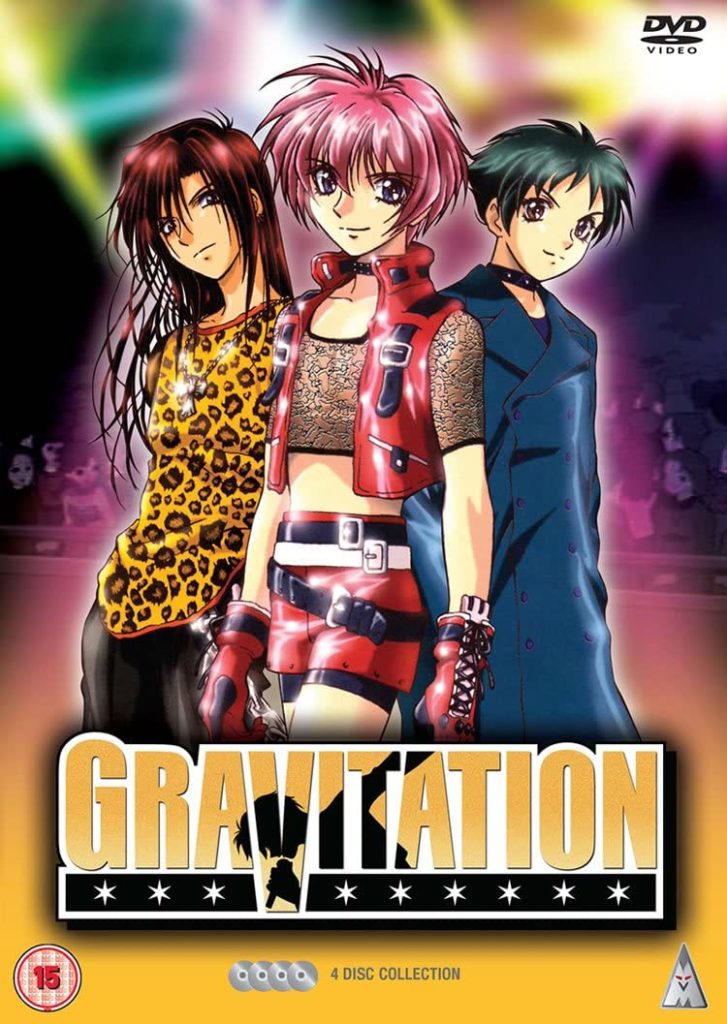
As for my first LGBT+ anime, this is also a series that is sadly no longer available in the UK: Gravitation. I remember discovering it via anime music videos on YouTube. I had no hope that I would be able to watch it in full one day as the UK had no history of releasing any Boys’ Love anime at all. But Gravitation, by some miracle, DID make its way over to the UK in 2011, 10 years after the series came out in Japan. I even reviewed it on amazon.co.uk (way before I joined AUKN) because I was shocked that it had been released and hoped it would do well enough for more BL to make their way over here (sadly it did not). The series stars Shuichi and his band Bad Luck. One night whilst writing lyrics for a song, the paper is blown into the face of a mysterious blonde man who reads it and calls his writing garbage. Hurt but intrigued by this stranger, Shuichi doesn’t give up on his dreams of stardom in Japan, only to find out that the man who dismissed his lyrics is none other than the famous romance novelist: Eiri Yuki! I haven’t re-watched it in years, however despite its age, the soundtrack is super catchy and I still remember of lot of the most iconic scenes from the series (such as Shuichi yelling his crush’s name on stage). The series also did well is the US, enough to help pave the way for more series of its kind to make their way stateside as well. We do have some LGBT+ anime coming in drips and drabs in the UK, such as Bloom Into You, but manga is still the place to look if you want more LGBT+ driven stories.
Demelza
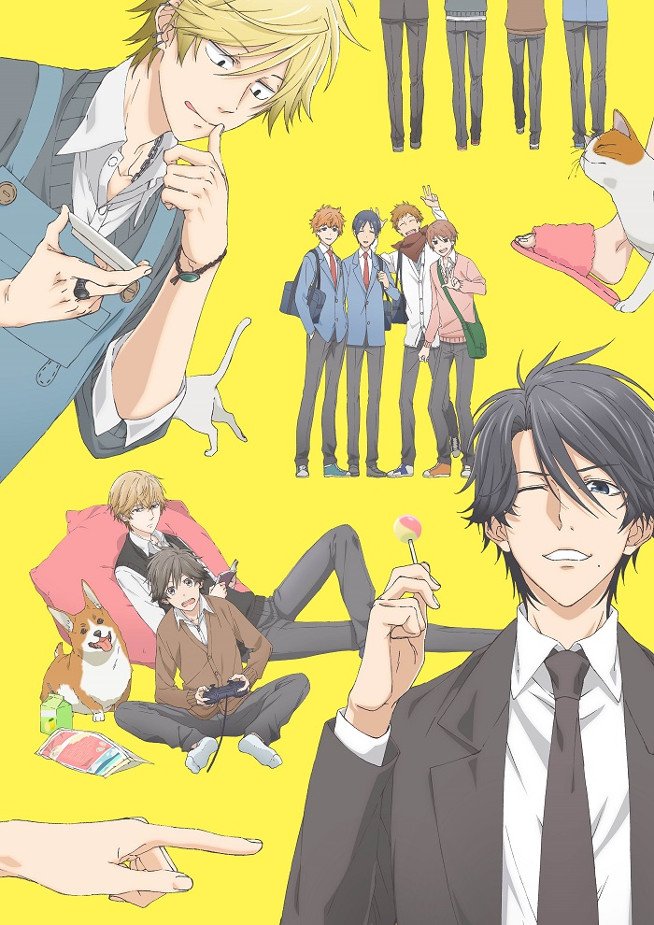
As far as I can remember my first experience with a BL series was the anime adaptation of Super Lovers, having been lured in by the fact that Yoshitsugu Matsuoka was voicing one of the main characters. It’s safe to say that this one with its problematic premise of adopted brothers in love probably wasn’t the best way to step into the genre, but it did at least leave me curious about what else was on offer here. I kept watching the few BL anime that turned up, eventually leading to Hitorijime My Hero which had a far better concept and interesting cast of characters supporting it (and again, Matsuoka in a leading role).
Hitorijime My Hero follows high school delinquent Masahiro Setagawa and high school teacher Kosuke Oshiba, a former delinquent himself and older brother to Kensuke Oshiba who is one of Masahiro’s closest friends. Masahiro idolises Kosuke, while Kosuke simply wants to protect Masahiro and somewhere along the way these feelings turn romantic. The anime didn’t get that far into the story in the grand scheme of things, but I’ve followed the manga since Kodansha brought it out in English and have enjoyed the twists and turns that have come since.
It took me a while to dive into BL manga since there was so much of it and I struggled to figure out what had a compelling story and what was, for lack of a better word, simply smutty with little substance. Perhaps that’s why my first manga in that genre ended up being Hitorijime My Hero and then closely followed up by Ten Count.
GL manga and anime fare even worse since I didn’t start buying anything from that genre until Bloom Into You’s anime aired in 2018 because I found a lot of GL was oversexualised and aimed at a male audience. This is something that continues to put me off the genre even today, but I’m glad that has been changing in recent years as publishers publish a greater variety of these titles and different kinds of GL series have been made into anime. I especially appreciate Bloom Into You for proving to me that better GL stories are out there and leading me to give the genre a proper chance. There is a really nice selection of titles on the market now that I wish had existed, or I’d noticed existed, 5-10 years ago but slowly but surely my collection of LGBT+ titles continues to grow.
Ian Wolf

My general attitude to exploring anime and manga when I first got into it was to try and find the most well-known titles first as a starting point.
When it came to anime, the first BL title I watched was Junjo Romantica, which at the time was only available as a Region 1 DVD release from Nozomi Entertainment, but would go on to be released in the UK by Anime Ltd in 2018. I reviewed the first season for AUKN. Junjo Romantica is certainly a series that has its faults: the quality of the animation for one, and some references in the series being rather dated, but the comedy and romantic angles help make it more watchable.

The first print BL title I read was not a manga, but a light novel. The sci-fi series Ai no Kusabi, released by DMP and set in a dystopian world with a strict caste system based on people’s hair colour, certainly has its own share of problems; the main issue being the uke/bottom in the story, Riki, being underage. This makes things even more troublesome, given the BDSM-heavy nature of the relationship between Riki and the seme/top Iason. If anything, perhaps the most interesting aspect of the story is the setting. Set on a planet called Amoi, Riki comes from an area called Ceres which hated the way everyone was run on Amoi and decided to become independent, leading to everyone else basically saying: “OK, but if you go independent, then that’s it, you’re getting no help from us”, and as a result Ceres becomes a massive slum area. Can you imagine some territory, perhaps a country, leaving an organisation of other territories wanting “independence”, only for it to end up worse coughBrexit?
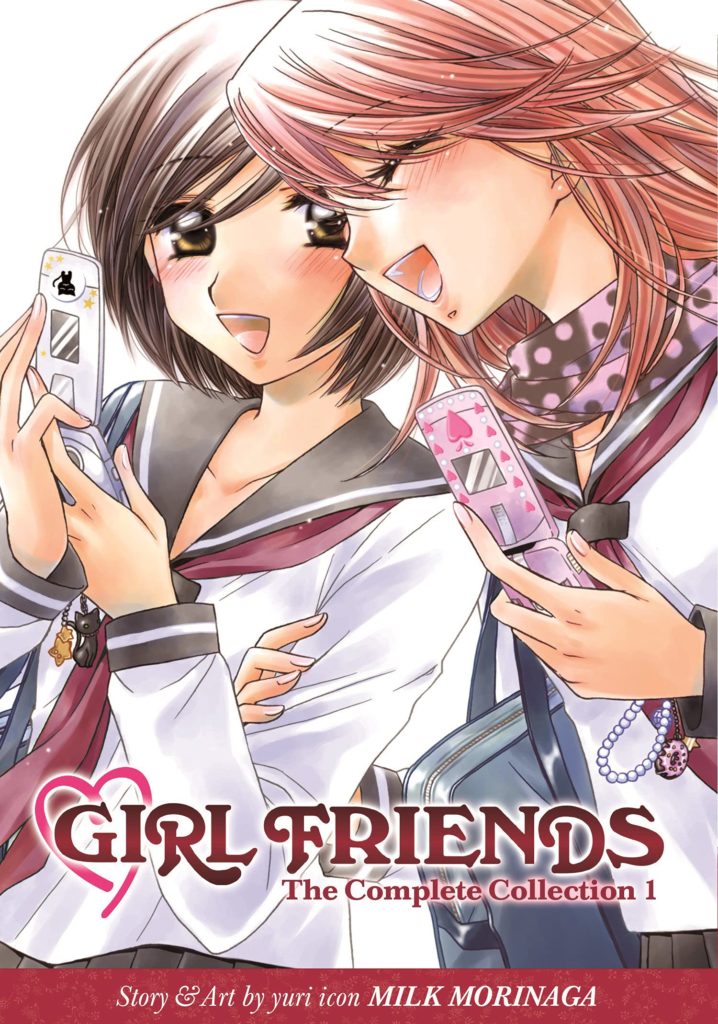
The first GL series I read was Girl Friends by Milk Morinaga, released by Seven Seas. It was one of the few such GL titles around and at the time I thought it was interesting, but after a while it got to the point where just about every GL title that got released in English had to be about schoolgirls, and while reading it for the first time was interesting, I now get annoyed by the lack of diverse settings you see in GL titles over here. Series like VIZ Media’s After Hours, which features adult women, are more appealing.
Sarah
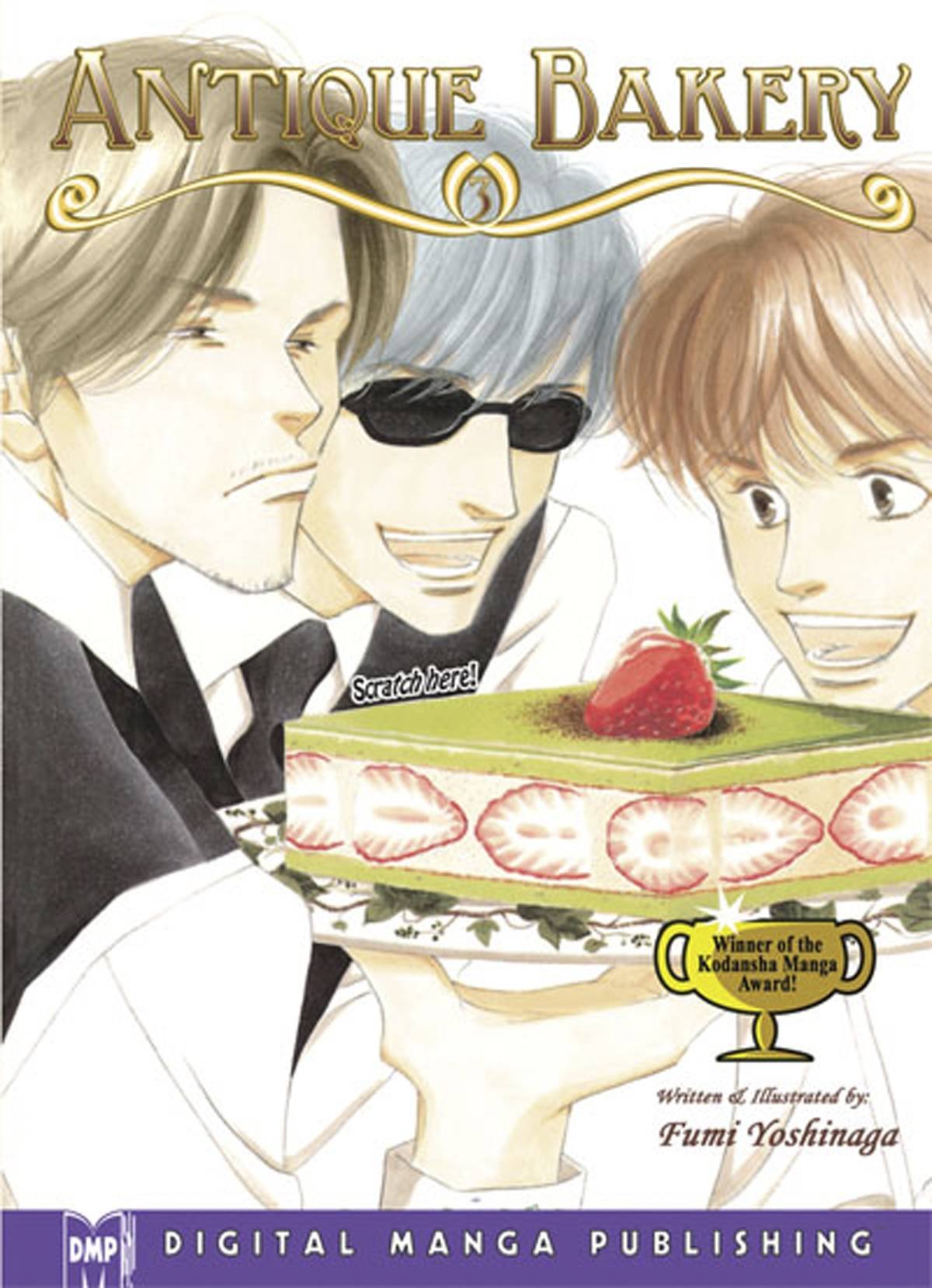
My first LGBT+ manga and anime? Fumi Yoshinaga was the first dedicated BL mangaka to catch my attention. Here was an intelligent BL storyteller with a sense of humour and dramatic flair, who was also able to deliver beautifully drawn manga for adults. Antique Bakery (June/DMP 2005) is not, strictly speaking, BL at all, although it includes the ‘demon gay’ pâtissier in the central quartet of characters (all male) – it also benefits from an engrossing and well-told mystery plot. And cakes. Wonderful cakes! (As a gimmick the covers had a scratch and sniff panel that never really worked for me, but…) Live action versions and a TV anime series followed on – and also more of her BL manga reached our shores, confirming with series like Ichigenme (801) that she could deliver realistic sexual encounters alongside well-observed relationship portrayals and with Gerard and Jacques (Blu) that she could also do convincing historical fiction (in this case set in France at the time of the revolution). Solfege (June) was the first BL manga I read that made a real impression on me (it didn’t reach us until 2007 but was originally published in 1998, so Yoshinaga’s distinctive graphic style was still evolving). The story of an easy-going, gay music teacher who unwisely embarks on an affair with the promising student he’s coaching in spite of his better judgment – and the unforeseen complications that ensue – make for a thought-provoking read, even today. It touches on issues that have become BL tropes (for better or worse) most notably the ‘inappropriate’ student/teacher relationship but Fumi Yoshinaga was never one to take the clichéd route, even then, and her portrayal of both central characters is touching and believable (even when we’re made to feel how wrong the situation is). June/DMP is – just about – still hanging in there after ten very bumpy years but many of the early US BL publishers have vanished: Deux; Kitty Media; 801; DramaQueen; Blu (Tokyopop’s BL label back in the day)…
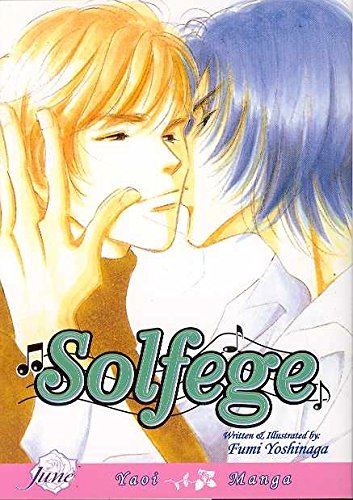
Yoshinaga’s love of good food continues to shine through in her ongoing slice-of-life series What Did You Eat Yesterday? (Vertical) which shows the everyday lives of lawyer Shiro and his partner Kenji (hairdresser) and the food that they cook. Even though concerns sometimes arise because of the nature of their partnership (currently what will happen when eventually one of them dies) the set-up quietly accepts that they have committed to living together – and there’s none of the earlier BL tropes that still get certain mangaka a bad rep today: non-con; inappropriate age-gaps; incest; ‘only gay for you’ etc.
When it comes to anime today, however, what a different story for UK R2 viewers! It’s easy to forget in these easy days of streaming how difficult it was to access niche genres back then and BL was very much a niche genre (yuri/GL less so) and maybe still is, although thanks to some excellent recent releases from Blue Lynx (Stranger on the Shore, Twittering Birds, Given) that situation is slowly changing. Back in the noughties, it was a case of importing from Japan or the US or watching Gravitation (I loved Gravitation the anime, but don’t even ask me about what went wrong with the manga?!). Of course, there were ‘BL adjacent’ series which featured friendships that lent themselves to shipping (GetBackers, Tactics, Saiyuki, Kyo Kara Maoh! Gankutsuou and many more). But my first genuine BL anime was a R1 import (FAKE) and to this day, the only R2 BL physical releases have been Gravitation, Junjo Romantica, DRAMAtical Murder and Yuri on Ice (not strictly BL). Only three titles in twenty plus years!
Rui
My first positive exposure to LGBT+ characters in the media probably came from anime and manga, which sounds enormously strange in the context of today’s world. I was raised in a corner of the UK which was less than progressive at the time, during an era where homosexuality and gender identity were taboo subjects and well-informed voices in the media were few and far between. Discovering titles such as Sailor Moon and Fushigi Yuugi where LGBT+ characters simply existed and expressed themselves the way that they wanted was an enormous moment for me as a teenager. So while I appreciate that a lot of content fumbles with its representation even now, I’m extremely grateful for those early days of discovery which I might never have had outside of this hobby. Even the less-good examples of LGBT+ characters in manga have played an important role in normalising something natural, paving the way for other creators to expand their horizons and learn more about how we all fit into this world together. In addition, they have helped lay the groundwork for LGBT+ creators to find audiences for what would previously have been niche works, and it’s nice to see that a few titles continue to push the boundaries even now.
When it comes to manga, I don’t read all that much original BL/GL because I mostly collect doujinshi based on my favourite series. This is mostly because I like to become very attached to characters and the shorter format of the one-shots common in BL/GL is a different type of storytelling. Nonetheless, I’ve enjoyed quite a few series over the years and there has seldom been a dull moment for an English-speaking fan, from dubious English titles (Eerie Queerie! remains the most awkward retitling I’ve seen in manga) and the difficulty of ascertaining quality in advance when trying out a new volume, particularly back when it was harder to find reliable reviews. The works of Eiki Eiki and Mikiyo Tsuda quickly became highlights because they tended to be relatively light-hearted, and Gravitation was so notorious back then that I think it was a first long-running BL title for just about everyone!
My experiences with GL have tended to be a lot more complicated, largely because there was such a dearth of it for such a long time. I think my first GL-related purchase was probably Erica Sakurazawa’s Between the Sheets. I liked it enough that I purchased all of the other books that Tokyopop put out by the same creator; the cynical, more adult style of josei manga turned out to be exactly how I like my GL stories. Unfortunately, the rest of her output was lighter on GL (though I still liked it) and I had to make do with whatever scraps I could find at a time when josei manga wasn’t popular at all. I had high hopes when Okazaki Mari’s Sweat & Honey made it to the west only for Tokyopop to appear to give up on the genre entirely.

Kiriko Nananan’s single-volume Blue was probably the first GL title released in English which really resonated with me. It came out in 2006, a decade after its Japanese publication date, and didn’t seem to get many people talking at the time despite getting a handsome print edition which unapologetically celebrated its minimalist artwork (and minimalist dialogue). Once again, I had high hopes that the author’s other work would be following because the moody, more adult perspective on the fumbling awkwardness of navigating an unexpected school crush was like nothing else I could find in comics at the time. Sadly, nothing ever materialised. GL would eventually rebound in the west – books aimed at male readers are now vastly more popular – but I still feel that it would be nice to get more work aimed at older women as well. BL tends to escape the usual school classroom hijinks more often than its counterpart and it’s all the better for it.
Meanwhile, anyone looking for LGBT+ representation beyond the popular BL/GL dynamics has tended to have it even harder. Paradise Kiss was a great experience, in a time before anyone could imagine something like Wandering Son ever making it big, because it rounded out its cast with memorable bisexual and trans characters in important roles. It was the first series I read which clearly and unambiguously normalised those identities – the artsy setting neatly swept all of the ambiguity away – and those characters have stuck with me ever since. On the other end of the scale was Revolutionary Girl Utena, where even though nearly everything about the show was calculatedly ambiguous there was a delightful sense of queerness throughout the drama.

This sense of digging around for unexpected representation outside of dedicated BL/GL brings me back full circle to the titles which I think must have been the very first manga I read with LGBT+ themes: Moto Hagio’s A, A’ and They Were Eleven, classic shoujo science fiction manga which capably questioned gender roles and sexual attraction in a way which complemented their stories. The latter was my first and I only found it by accident, innocuously tucked inside a one-shot compilation book called Four Shoujo Stories (which I must have read at least a dozen times).
I do hope that publishers continue to experiment with content featuring all kinds of queer experiences, both real and fantastical, because even the vaguest, strangest LGBT+ storylines can provoke readers to educate themselves and learn more about themselves and their fellow humans. Representation really does matter.
Onosume
The first experience I had with an LGBT+ series, and one of the first few anime I picked up when I was just starting to get into the medium back in 2006/2007, was the yuri series Strawberry Panic.
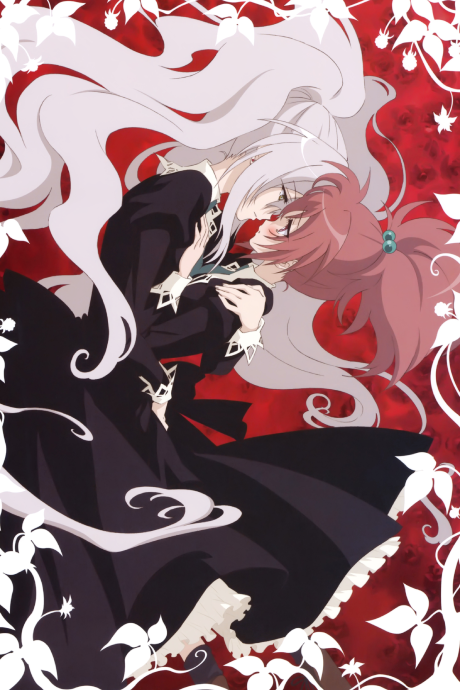
Originally conceived by Sakurako Kimino (who would go on to become one of the main creative staff involved in the creation of the Love Live! franchise) as a series of short stories and further expanded upon with an anime series, manga and light novels, the story is set around a collective of all-girls Catholic boarding schools on Astraea Hill: St. Miator’s Girls’ Academy, St. Spica’s Girls’ Institute, and St. Lulim’s Girls’ School, and tells of the lives and relationships of the girls that attend them.
The main protagonist is Nagisa Aoi, a clumsy and air-headed girl who literally falls into the arms of top student Shizuma Hanazono on her first day. Enamoured by her senior’s regal beauty and mannerisms, Nagisa quickly falls in love; however, Shizuma is well-known as an ice queen and heartbreaker, whose promiscuous behaviour hides a dark past. If Nagisa wants to become Shizuma’s one and only, she must first uncover her secrets and melt her heart, all the while forming friendships and getting into all kinds of hijinks with her other classmates.
While it would probably seem quite dated now with how the genre has matured, and while not necessarily ground-breaking considering how it comes off as quite similar to the earlier Maria Watches Over Us, I do remember enjoying this for how it combined a lot of staple elements into one approachable package, from slice-of-life goofing off, to “forbidden fruit” style relationships and a central mystery that unravels as the show goes on.
Despite following the typical stereotypes, each of the main characters are cute and easy to engage with and have plenty of great moments through the series. Having three different schools and a different couple associated with each one ensured that even if you didn’t like the main couple there was someone for you to latch onto, while piling up the love polygons gave the series plenty of drama. Meanwhile, the episodes more focused on goofing off and school life injected some comedy and opportunities for the cast to get closer together.
It looked pretty good for the time and was animated by Madhouse in their mid-2000s peak, preceding the likes of Nana, Black Lagoon and Death Note, while I remember it having a great soundtrack, along with a great set of opening and endings that I still listen to from time to time even now.
While the series isn’t available in the UK (it does have a 2012 DVD and 2018 Blu-ray release in the US from Media Blasters), Seven Seas did release the manga and light novel adaptations in the early 2010s. While they follow the same characters, the stories are quite different from the anime, yet are both still enjoyable reads. It’s just a shame the manga cut off unfinished at just two volumes, so if you’re interested in taking a look at this series (and I’d highly recommend you do), either grabbing the light novel omnibus or importing the anime from the US is the way to go.


